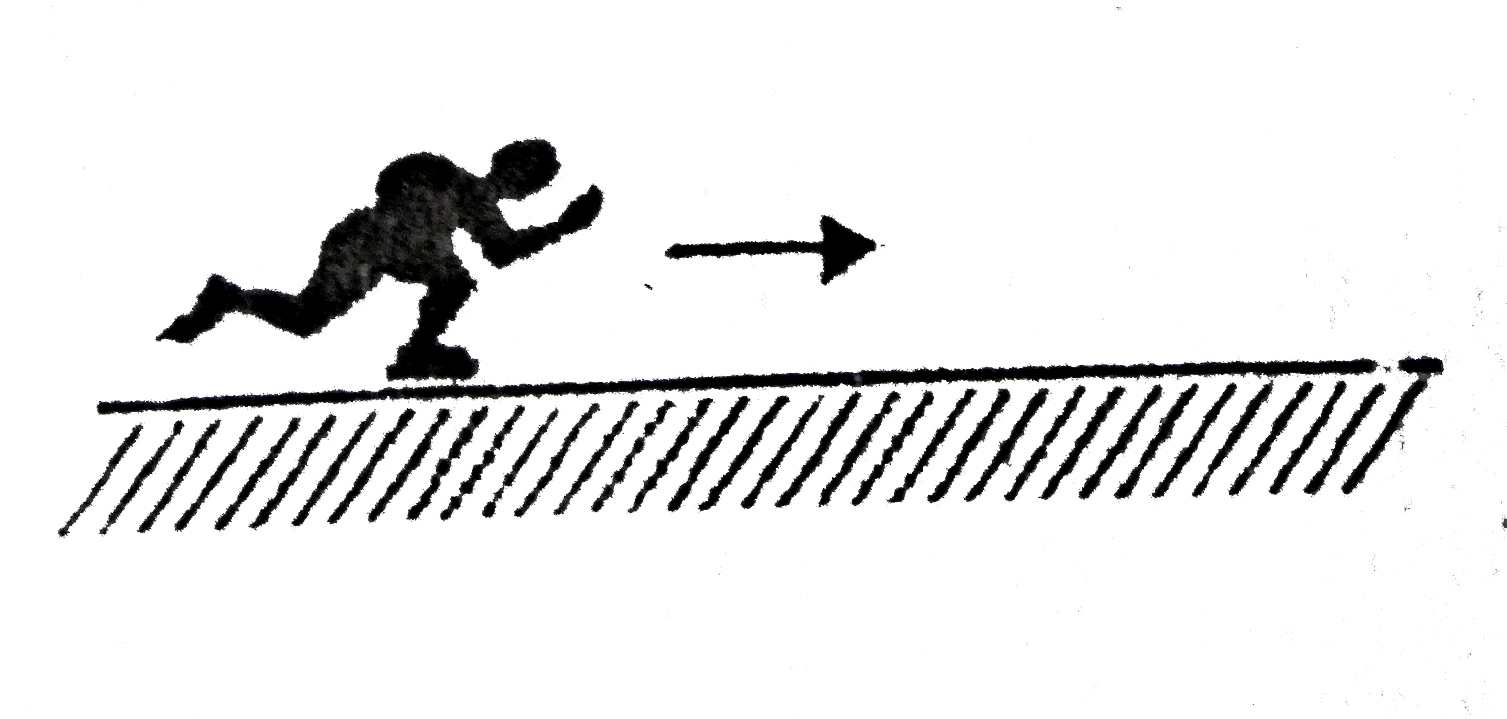If a man has a velocity varying with time given as v=3t2,v is in m/s and t in sec then :

Find out his displacement after 2 seconds of his start :
10m
6m
12m
8m
The correct Answer is:D
s∫odS=2∫03t2dt
S[t3]20=8
Topper's Solved these Questions
- DAILY PRACTICE PROBLEMSBOOK - RESONANCE ENGLISHCHAPTER - DAILY PRACTICE PROBLEMSEXERCISE - dpp 70
7 Videos
- DAILY PRACTICE PROBLEMSBOOK - RESONANCE ENGLISHCHAPTER - DAILY PRACTICE PROBLEMSEXERCISE - dpp 71
8 Videos
- DAILY PRACTICE PROBLEMSBOOK - RESONANCE ENGLISHCHAPTER - DAILY PRACTICE PROBLEMSEXERCISE - dpp 69
5 Videos
- CURRENT ELECTRICITYBOOK - RESONANCE ENGLISHCHAPTER - CURRENT ELECTRICITYEXERCISE - Exercise
53 Videos
- ELASTICITY AND VISCOCITYBOOK - RESONANCE ENGLISHCHAPTER - ELASTICITY AND VISCOCITYEXERCISE - Advanced Level Problems
9 Videos
Similar Questions
If a man has a velocity varying with time given as v=3t2,v is in m/s and t in sec then :

Find out his acceleration after 3 seconds :
View SolutionIf a man has a velocity varying with time given as v=3t3,v is in m/s and t in sec then :

Find out his acceleration after 4 seconds :
View SolutionIf a man has a velocity varying with time given as v=3t2,v is in m/s and t in sec then :

Find out the velocity of the man after 3sec.
View SolutionIf a man has a velocity varying with time given as v=3t3,v is in m/s and t in sec then :

Find out the velocity of the man after 4sec.
View SolutionIf velocity v varies with time t as v=2t2, then the plot between v and t2 will be given as :
View SolutionIf velocity v varies with time t as v=2t2, then the plot between v and t2 will be given as :
View SolutionThe velocity v of a body moving along a straight line varies with time t as v=2t2e−t, where v is in m/s and t is in second. The acceleration of body is zero at t =
View SolutionA particle moving in a straight line has its velocit varying with time according to relation v=t2−6t+8(m/s) where t is in seconds. The CORRECT statement(s) about motion of this particle is/are:-
View SolutionThe velocity of an object moving rectilinearly is given as a function of time by v=4t−3t2 where v is in m/s and t is in seconds. The average velocity if particle between t=0 to t=2 seconds is
View SolutionIf the equation for the displacement of a particle moving in a circular path is given by (θ)=2t3+0.5, where θ is in radians and t in seconds, then the angular velocity of particle after 2s from its start is
View Solution
